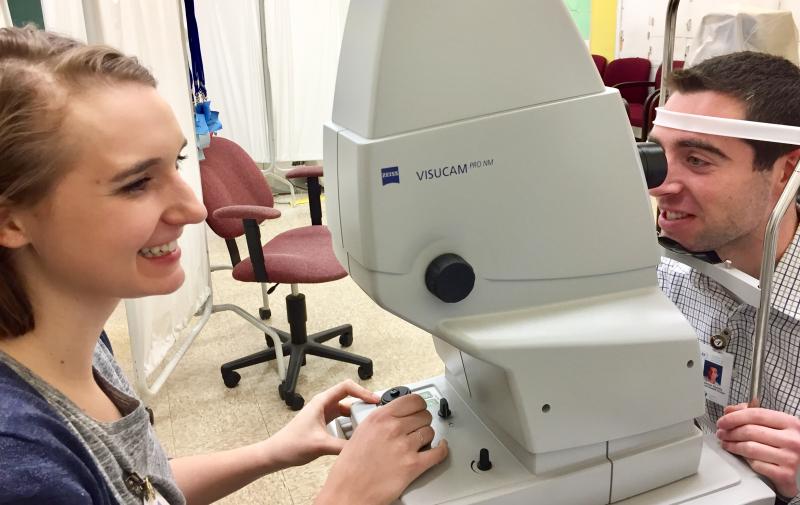How very fitting that the site of the Princeton Vision Clinic sits within the walls of a former elementary school building. Good vision and school performance could not be more closely linked. Although the Princeton Elementary building no longer functions as an academic learning environment, it remains a vital component of children's education potential throughout Chicago. If the inseparable link between vision and education is not immediately clear, let me illustrate with an analogy:
Imagine you are in a cycling race, but your bicycle has a flat tire. No matter how hard you try or how fast you pedal, your bicycle cannot go as fast as the others. From afar, spectators wonder if you are a poor cyclist and question if you were taught how to bike properly in the past. From the bike's vantagepoint, you do not realize that your bike is malfunctioning and instead falsely believe this is how all bikes work. On your bike, you are unable to finish the race and are forced to go home feeling dejected and unfulfilled. However, before the next race, a mechanic is given the chance to inspect every bike. The mechanic quickly realizes your bike's issue and easily patches up the flat tire. All of a sudden, with your improved bike, you are unencumbered by the burden of the flat tire and realize that these struggles could be easily remedied. With a fresh tire and a fresh mindset, you can now cruise through the race course with all the other riders. You have the ability to finish the race and you can enjoy riding your bike!
Much like the cyclist with a flat tire, a child with a vision deficiency can feel as if they are behind the pack even while trying their hardest. These vision struggles can manifest through trouble seeing the board or difficulty reading books, resulting in a lack of academic confidence and lower self-worth. However, once a child is screened through a vision program such as the Princeton Vision Clinic, they are able to have their analogous flat tire mended through the prescription of glasses or vision therapies. Children are then able to view the world they never knew they were missing and learn better than they ever have before.

As my fellow Vision Promoter Josh Finkel described in his November 2016 blog post, the Princeton Vision Clinic functions as an optometric resource for school-aged children (preschool through high school seniors) throughout Chicago. Princeton is especially unique in its capacity to provide eyecare for all children, regardless of barriers such as socioeconomic status or lack of insurance. This no-cost clinic is sustained through Medicaid funding, as well as outside grants, ensuring that cost is never a barrier to great vision. With barriers in vision reduced, so too are the barriers to achieving academic potential.
When thinking about education inequity, it is commonplace to think only of inequalities between various education systems and differences in academic resources. Less often discussed, however, are inequalities in access to pediatric vision care. Every day, these children have to tackle a completely preventable barrier that hinders the ability to see, focus, and process information. The Princeton Vision Clinic aids more than 30,000 children annually with the vision services imperative to succeeding in school, acting as the curative mechanic in the previous analogy. Whether it is reading a book or seeing the board, for many kids that come through the Princeton Vision Clinic, seeing is believing. A brighter future is just a pair of glasses away.

This blog post was written by NHC Chicago 2016-17 member Madeline Engeler.
Maddie is a Vision Promoter at the Illinois Eye Institute at CPS Princeton School.
